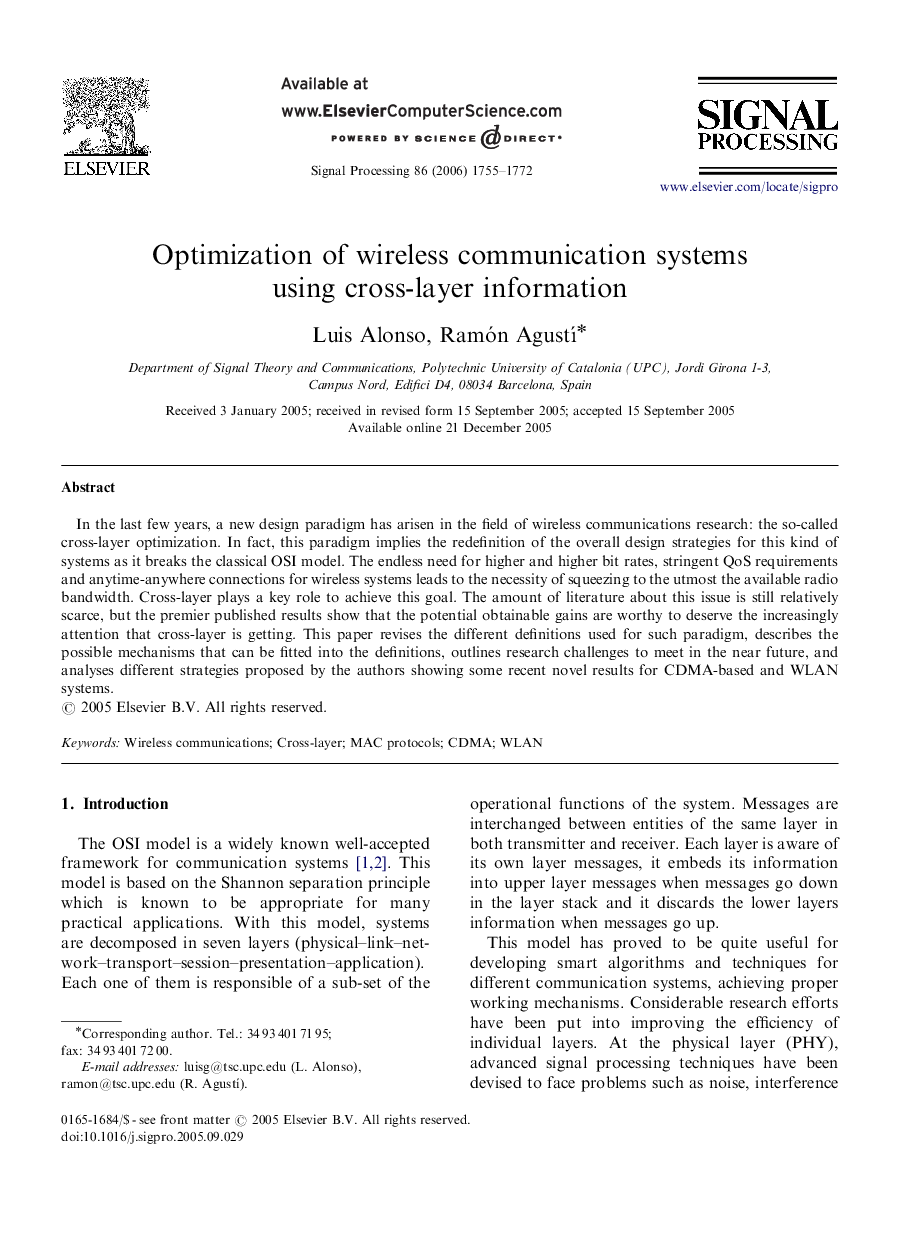| Article ID | Journal | Published Year | Pages | File Type |
|---|---|---|---|---|
| 567350 | Signal Processing | 2006 | 18 Pages |
In the last few years, a new design paradigm has arisen in the field of wireless communications research: the so-called cross-layer optimization. In fact, this paradigm implies the redefinition of the overall design strategies for this kind of systems as it breaks the classical OSI model. The endless need for higher and higher bit rates, stringent QoS requirements and anytime-anywhere connections for wireless systems leads to the necessity of squeezing to the utmost the available radio bandwidth. Cross-layer plays a key role to achieve this goal. The amount of literature about this issue is still relatively scarce, but the premier published results show that the potential obtainable gains are worthy to deserve the increasingly attention that cross-layer is getting. This paper revises the different definitions used for such paradigm, describes the possible mechanisms that can be fitted into the definitions, outlines research challenges to meet in the near future, and analyses different strategies proposed by the authors showing some recent novel results for CDMA-based and WLAN systems.
